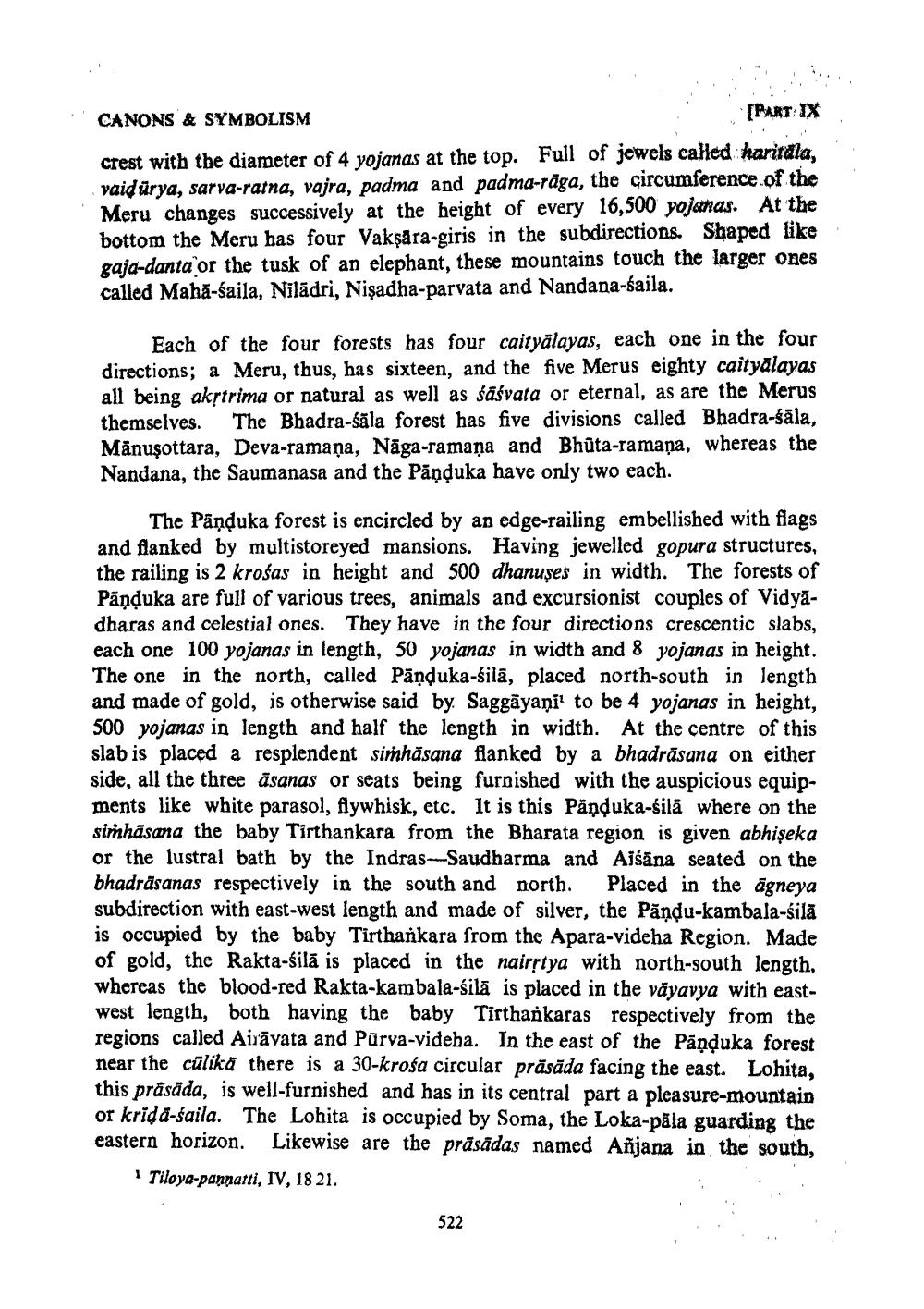________________
CANONS & SYMBOLISM
[PART IX crest with the diameter of 4 yojanas at the top. Full of jewels called haritala. vaidurya, sarva-ratna, vajra, padma and padma-räga, the circumference.of the Meru changes successively at the height of every 16,500 yojanas. At the bottom the Meru bas four Vaksara-giris in the subdirections. Shaped like gaja-danta or the tusk of an elephant, these mountains touch the larger ones called Mahă-śaila, Nilādri, Nişadha-parvata and Nandana-śaila.
Each of the four forests has four caityālayas, each one in the four directions; a Meru, thus, has sixteen, and the five Merus eighty caityalayas all being akstrima or natural as well as śāśvata or eternal, as are the Merus themselves. The Bhadra-śāla forest has five divisions called Bhadra-śāla, Mānuşottara, Deva-ramaņa, Nāga-ramaņa and Bhūta-ramana, whereas the Nandana, the Saumanasa and the Panduka have only two each.
The Pāņduka forest is encircled by an edge-railing embellished with flags and flanked by multistoreyed mansions. Having jewelled gopura structures, the railing is 2 krošas in height and 500 dhanuses in width. The forests of Pānduka are full of various trees, animals and excursionist couples of Vidyādharas and celestial ones. They have in the four directions crescentic slabs, each one 100 yojanas in length, 50 yojanas in width and 8 yojanas in height. The one in the north, called Pāņduka-šila, placed north-south in length and made of gold, is otherwise said by Saggâyani' to be 4 yojanas in height, 500 yojanas in length and half the length in width. At the centre of this slab is placed a resplendent simhasana flanked by a bhadrāsana on either side, all the three äsanas or seats being furnished with the auspicious equipments like white parasol, flywhisk, etc. It is this Pāņduka-sila where on the simhasana the baby Tirthankara from the Bharata region is given abhişeka or the lustral bath by the Indras-Saudharma and Aiśāna seated on the bhadrâsanas respectively in the south and north. Placed in the āgneya subdirection with east-west length and made of silver, the Pandu-kambala-silā is occupied by the baby Tirthankara from the Apara-videha Region. Made of gold, the Rakta-silā is placed in the nairstya with north-south length, whereas the blood-red Rakta-kambala-silā is placed in the vāyavya with eastwest length, both having the baby Tirthankaras respectively from the regions called Airāvata and Purva-videba. In the east of the Pāņduka forest near the cũlika there is a 30-krosa circular präsāda facing the east. Lohita, this prāsāda, is well-furnished and has in its central part a pleasure-mountain or krida-śaila. The Lohita is occupied by Soma, the Loka-pāla guarding the eastern horizon. Likewise are the prāsādas named Añjana in the south,
Tiloya-pannatti, IV, 1821.
522




